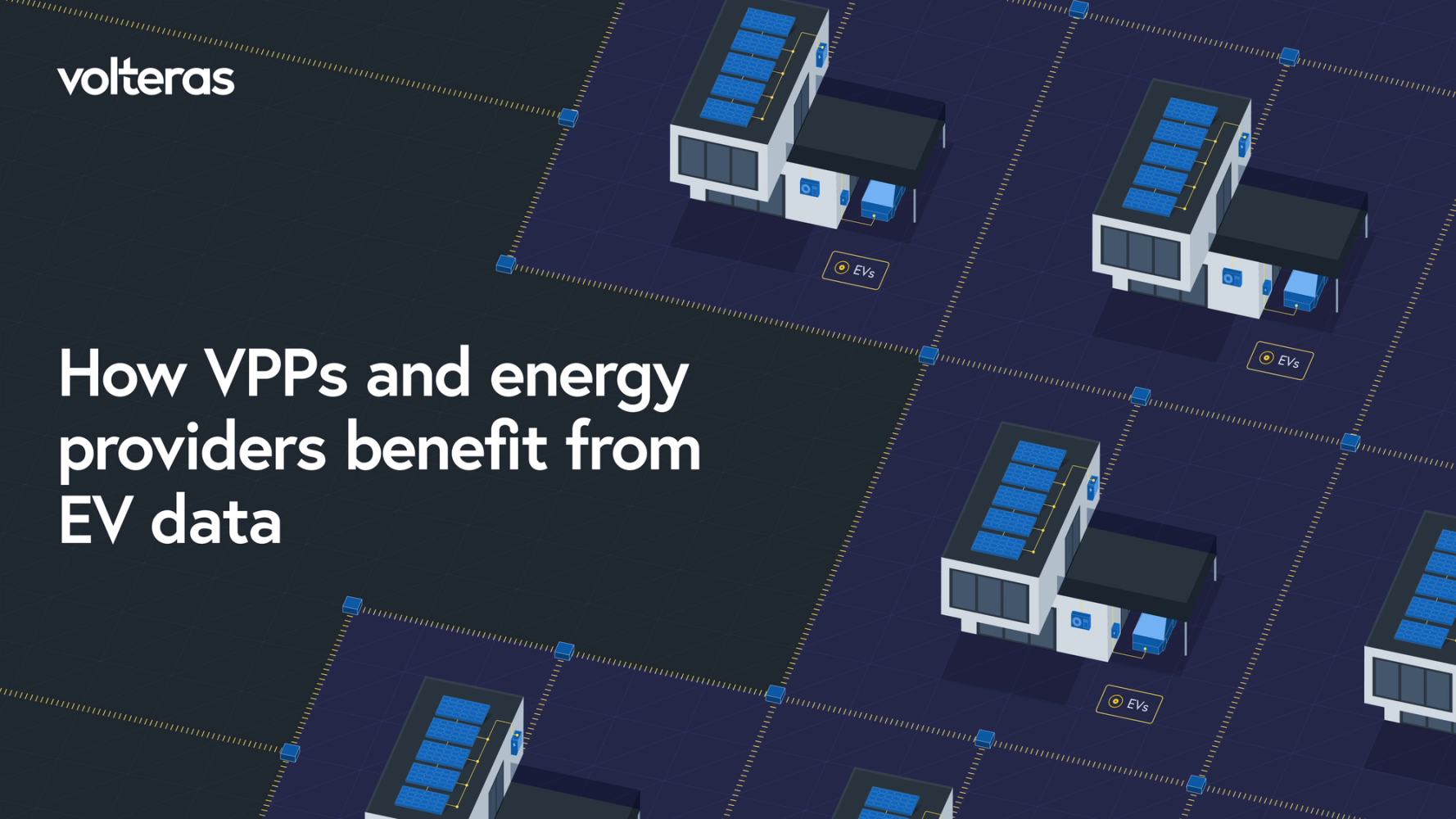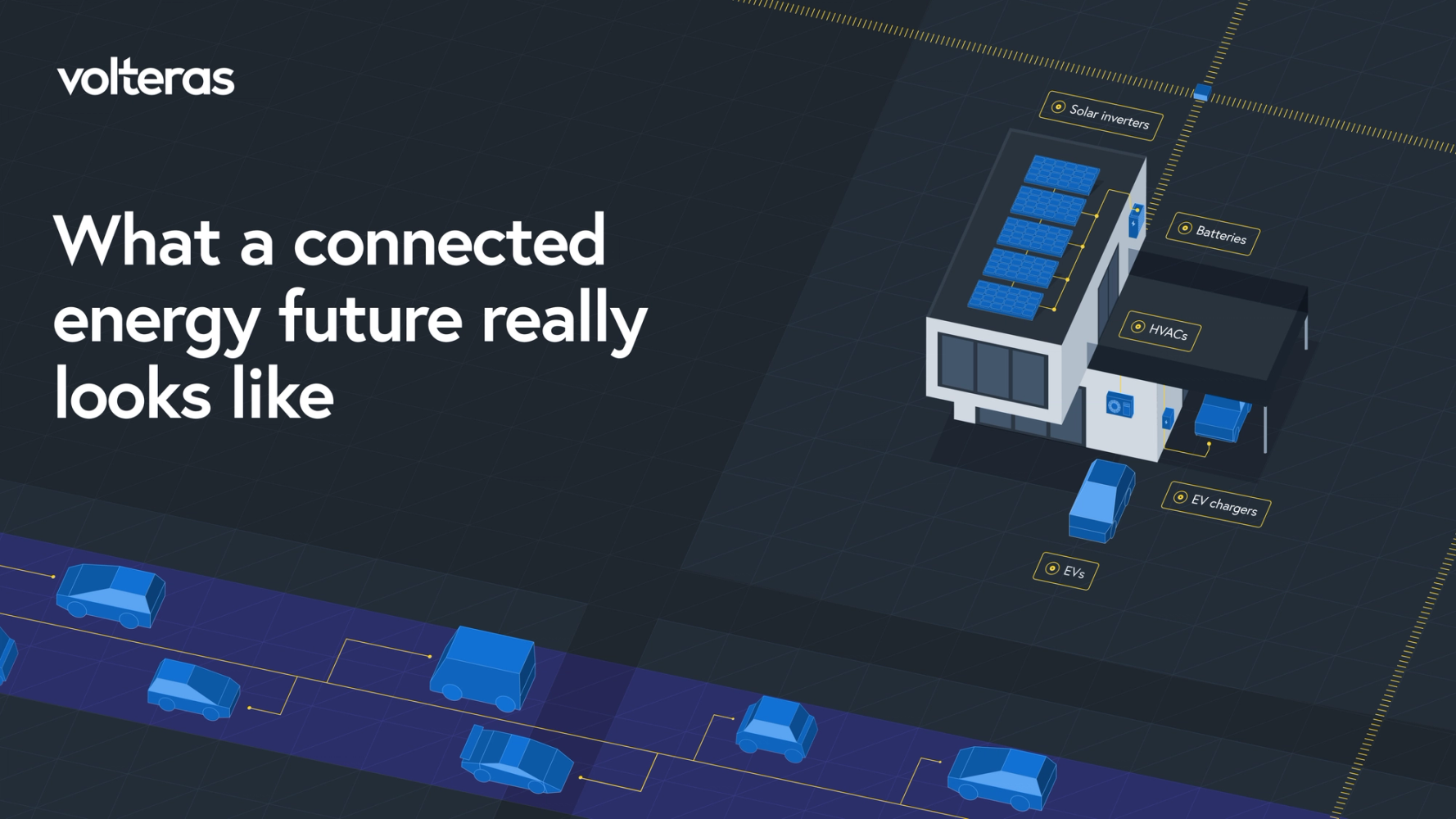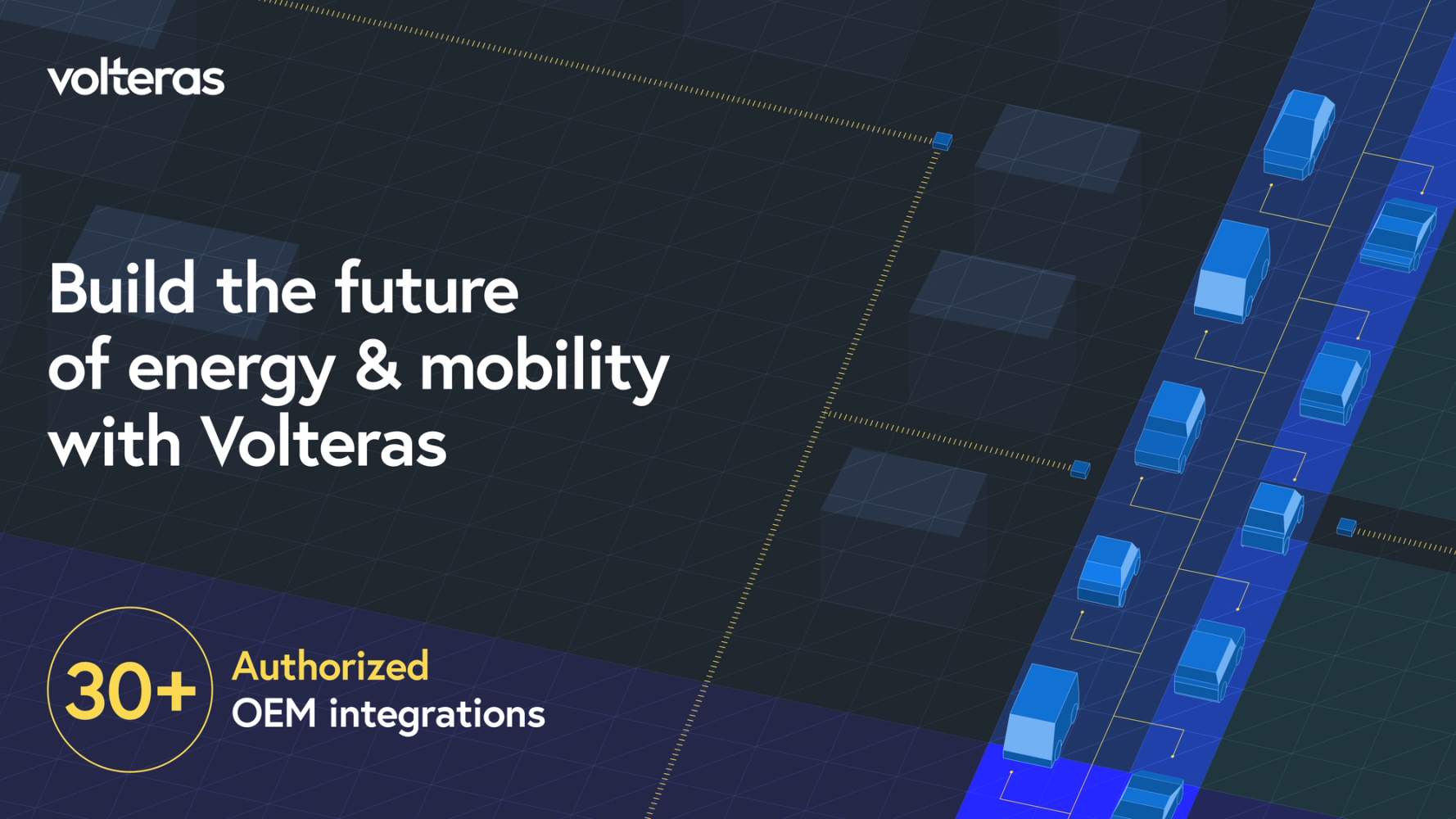

How reliable EV data can help drive the energy transition
Virtual power plants (VPPs) are a crucial part of the clean energy ecosystem. Unlike fossil-fuel-reliant power stations, VPPs use distributed energy resources (DERs) to produce, store, and share electricity efficiently. These sustainable DERs, like solar panels, home batteries, electric vehicles (EVs), and smart appliances, work together like one big power plant.
The advantages of VPPs are lower electricity costs—as homeowners can sell excess power back to the grid—more energy storage (and therefore reliability) and less strain on the grid. Reduced pressure on the grid means major events like nationwide blackouts are less likely to occur. And if they do, they don’t last as long.
In addition to optimizing grid operations and reducing costs for consumers, VPPs and energy suppliers can increase their own revenues while doing so.
For a VPP to function efficiently, suppliers need high-quality data from electric vehicles (EVs) and charging infrastructure.
That’s where we come in. At Volteras, we have authorized OEM (original equipment manufacturer) integrations that mean we supply reliable, real-time energy data from connected devices or EVs. Keep reading to see how the data we stream from EVs helps support a sustainable energy ecosystem.
EVs support real-time grid management
With information from EVs, energy providers can shift charging loads to off-peak hours, confidently predict peak demand, and manage it accordingly. Data needs to be provided in real time—ie as and when it happens. Energy providers need to know:
- Exactly how and when EVs are charging or discharging power
- Battery state of charge (SoC)—how much energy is available in EV batteries
- Charging status—when, where, and how EVs are charging
- Discharge potential for vehicle to grid (V2G)—which EVs can supply power back to the grid.
EVs give power back to the grid
EVs don’t just consume energy; they can also feed it back to the grid when there’s excess energy. Excess energy is stored power in the vehicle’s battery that isn’t imminently needed for driving. For example, if a driver charges their EV overnight but only needs 50% of the battery for a journey the next day, the extra 50% counts as excess energy.
EVs also recover energy when braking, adding small amounts of extra power back into the battery (this is known as regenerative braking).
EVs sending power back to the grid is known as vehicle-to-grid (V2G) services. For this to work effectively, energy providers must be able to:
- Identify which EVs have excess energy
- Access real-time battery health and charging data to make sure energy transfers happen safely and efficiently
- Transfer energy securely and in compliance with automaker security policies.
EVs enable demand response
Grid operators are able to limit the grid becoming overloaded by managing how much energy is demanded by and supplied to consumers. This is called demand response, and requires real-time EV data.
When demand is high, utilities can incentivize EV owners to delay charging or reduce charging speeds to prevent grid strain. Equally, when demand is low, EVs can charge at lower rates, making use of surplus energy that would otherwise go to waste.
For vehicle-to-grid (V2G)-enabled EVs, batteries can discharge stored energy back into the grid, helping to stabilize supply and reducing reliance on fossil-fuel-based backup power.
Volteras enables providers to accurately shift EV charging loads during peak grid demand (when energy demand is highest) by offering precise forecasting for grid demand, giving energy providers granular, second-by-second insights.
Authorized OEM integrations are essential for reliable data
For VPPs to act as a reliable power source, it’s essential that the data they stream is reliable, accurate and transferred in real time.
That’s why it’s important to avoid data streaming providers without authorized OEM integrations. These use screen-scraping to stream data, which involves hacking consumer apps, and is prone to error and outages. V2G transactions become risky and inefficient, and also pose significant cybersecurity risks.
Here’s a summary of the difference between authorized OEM integrations—like those at Volteras— and unauthorized screen-scraping methods.

How Volteras supports energy suppliers with real-time data
Volteras has a purpose-built API that transfers top-quality energy data second by second. Our official brand partnerships mean we transfer data from the source or OEM servers. That’s how we can stream data constantly, with 99.9% uptime.
With customizable algorithms to receive bespoke data, our platform is fully set up to work with a variety of energy businesses, utilities, e-mobility providers and more. We’ll do all the work for you—no more complex integrations or time-consuming data standardization. We give you data that’s in consistent, accessible formats, fully updated and fully reliable.
By working with Volteras, energy companies can scale V2G programs, ensuring stable and predictable energy transfer with almost no risk of data outages. This means:
- Real-time verification of energy availability from participating EVs
- Accurate, second-by-second battery monitoring, that makes sure batteries only discharge the exact amount they have available
- Secure data exchange that complies with OEM security standards, which reduces liability for energy providers.
Are you a utility provider or energy company interested in working together? Get in touch today.
What a connected energy future really looks like

Build the future of energy and mobility as a Volteras OEM partner

a clean energy future.

